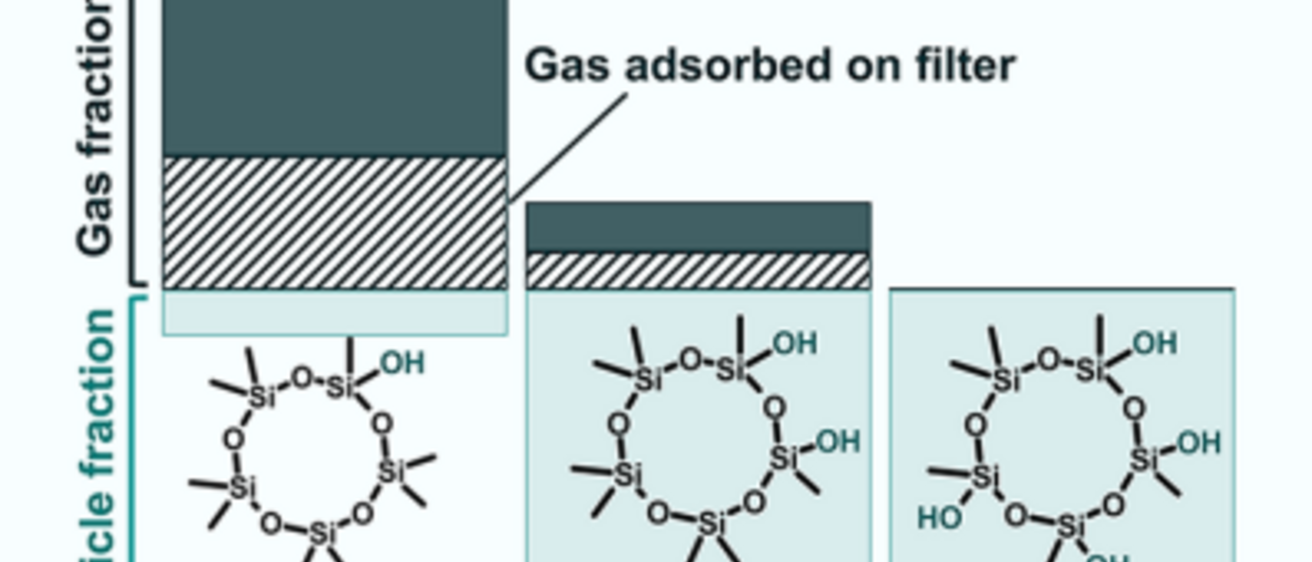Authors: Josie K. Welker, Jeewani N. Meepage, Charles O. Stanier, Elizabeth A. Stone
Title: Gas-particle distribution of D5 oxidation products in New York City during summertime
DOI: 10.1021/acsestair.5c00193
URL: https://pubs.acs.org/doi/10.1021/acsestair.5c00193
ABSTRACT: Personal care products can release decamethylcyclopentasiloxane (D5) to the atmosphere, where it oxidizes to form 1-hydroxynonamethylcyclopentasiloxane (D4TOH). This oxidation product subsequently can partition to the particle-phase to form secondary organic aerosol (SOA). The gas-particle distribution of D4TOH has been studied in the laboratory but has yet to be established in ambient air. This study examines the gas-particle distribution of D4TOH and related oxidation products in New York City during the summertime of 2022 using medium volume air samplers, solvent extraction, and gas and liquid chromatography mass spectrometry methods. Positive sampling artifacts constituted the majority of D4TOH observed on quartz fiber filters (54-100%, averaging 86%, n=12), indicating the high potential for particle-phase D4TOH to be over-estimated. After artifact correction, D4TOH was observed in fine particles in 5 of the 12 sampling periods, with its particle-phase fraction averaging 13%. Because D4TOH is predominantly in the gas phase, it makes a minor contribution to D5-derived SOA during summertime. Further oxidation products of D5, including di, and tetrasiloxanols are predominantly in the particle-phase (>77%, n=4) during summertime and have relatively small positive artifacts. These polysiloxanols provide evidence of D5-derived SOA in the urban aerosols and are more suitable tracers for D5-derived SOA than D4TOH in summertime because of their higher particle-phase fraction. 21
Key Words: 1-hydroxynonamethylcyclopentasiloxane, secondary organic aerosol, gas-particle distribution, positive artifact, SOA tracer, personal care products
Synopsis: D5 is widely used in personal care products and is demonstrated in this study to form secondary organic aerosol (SOA) in New York City during summertime. The monosiloxanol oxidation product, known as D4TOH, is primarily in the gas-phase and prone to filter sampling artifacts, while more-oxidized polysiloxanol products are predominantly in the particle-phase and may prove useful in source apportionment of personal care product SOA.
